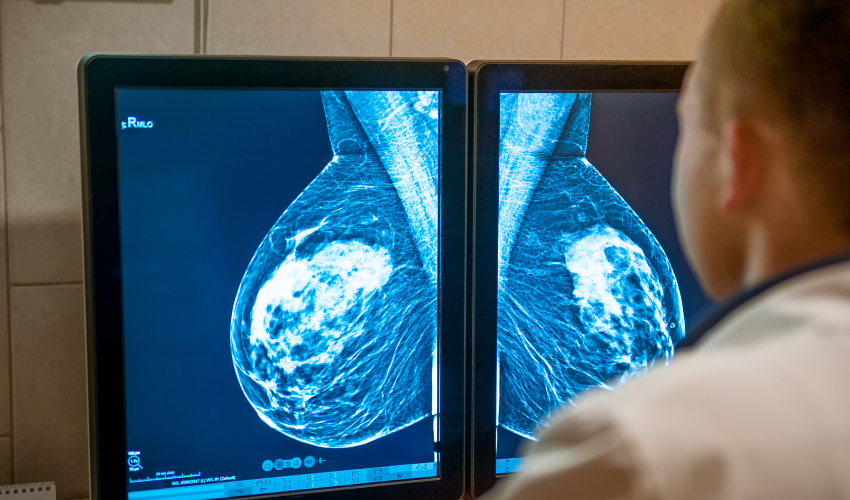Breast cancer is a type of cancer that develops in breast cells. It is one of the most common cancers affecting women globally. Although breast cancer can also affect men, it is rare. The development of breast cancer can occur in any part of the breast, including the milk ducts, lobules, and connective tissue. This article explores the development of breast cancer, its risk factors, symptoms, prevention strategies, and treatment options.
Risk Factors:
Several factors increase the risk of developing breast cancer. These include:
- Age: As women age, the risk of developing breast cancer increases.
- Family history: Women with a family history of breast cancer have a higher risk of developing the disease.
- Genetic mutations: Certain genetic mutations, such as BRCA1 and BRCA2, increase the risk of developing breast cancer.
- Reproductive history: Women who started menstruating at an early age or experienced late menopause have a higher risk of developing breast cancer.
- Hormonal factors: Women who have undergone hormone replacement therapy or have taken oral contraceptives for a long time have a higher risk of developing breast cancer.

Symptoms:
Breast cancer can cause several symptoms, including:
- A lump or thickening in the breast or armpit.
- A change in breast size or shape.
- Nipple discharge or inversion.
- Skin changes, such as redness, dimpling, or scaling.
Prevention Strategies:
Several lifestyle changes and preventive measures can reduce the risk of developing breast cancer, including:
- Maintaining a healthy weight: Obesity increases the risk of breast cancer.
- Regular exercise: Physical activity reduces the risk of breast cancer.
- Limiting alcohol intake: Alcohol consumption increases the risk of breast cancer.
- Breastfeeding: Breastfeeding can reduce the risk of breast cancer.
- Regular screenings: Women should undergo regular breast cancer screenings to detect any abnormalities early.

Treatment Options:
The treatment options for breast cancer depend on the stage and type of cancer. The most common treatment options include:
- Surgery: This involves the removal of the tumor and surrounding tissue.
- Radiation therapy: This involves the use of high-energy radiation to kill cancer cells.
- Chemotherapy: This involves the use of drugs to kill cancer cells.
- Hormone therapy: This involves the use of medications to block hormones that promote the growth of breast cancer cells.
- Targeted therapy: This involves the use of drugs that target specific proteins in cancer cells.
FAQs:
Can men develop breast cancer?
Yes, although it is rare, men can develop breast cancer.
Is breast cancer hereditary?
Yes, some genetic mutations increase the risk of developing breast cancer.
What is the survival rate for breast cancer?
The survival rate for breast cancer depends on the stage and type of cancer. However, the five-year survival rate for breast cancer is 90%.
Can lifestyle changes reduce the risk of breast cancer?
Yes, maintaining a healthy weight, regular exercise, limiting alcohol intake, and breastfeeding can reduce the risk of breast cancer.
Are there any side effects of breast cancer treatment?
Yes, breast cancer treatment can cause several side effects, including fatigue, nausea, hair loss, and changes in appetite.
Conclusion:
Breast cancer is a significant health concern affecting women worldwide. Understanding the development of breast cancer, its risk factors, symptoms, prevention strategies, and treatment options is crucial for early detection and effective treatment. Regular screenings, lifestyle changes, and appropriate treatment can increase the chances of survival and improve the quality of life of those affected by breast cancer.
It is essential to consult with a healthcare provider about breast health and take steps to reduce the risk of breast cancer. With increased awareness, education, and research, we can continue to develop new strategies and treatments to combat breast cancer and improve outcomes for those affected by this disease.






















